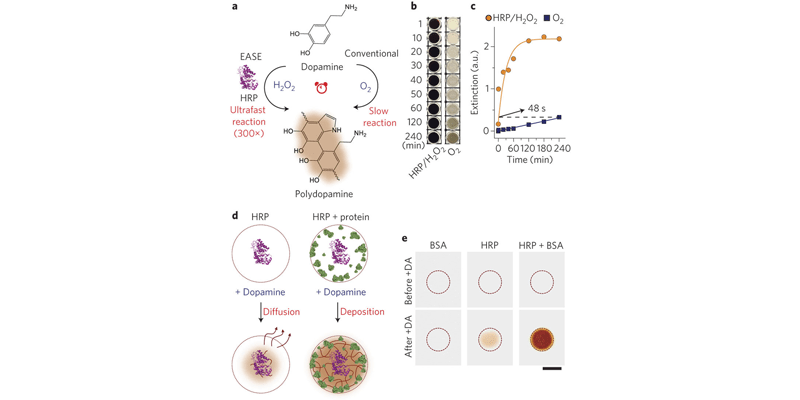Image: Schematic of the EASE technology.
Abstract
The ability to detect biomarkers with ultrahigh sensitivity radically transformed biology and disease diagnosis. However, owing to incompatibilities with infrastructure in current biological and medical laboratories, recent innovations in analytical technology have not yet been adopted broadly. Here, we report a simple, universal ‘add-on’ technology (dubbed EASE) that converts the ordinary sensitivities of common bioassays to extraordinary ones, and that can be directly plugged into the routine practices of current research and clinical laboratories. The assay relies on the bioconjugation capabilities and ultrafast and localized deposition of polydopamine at the target site, which permit a large number of reporter molecules to be captured and lead to detection-sensitivity enhancements exceeding three orders of magnitude. The application of EASE in the ELISA-based detection of the HIV antigen in blood from patients leads to a sensitivity lower than 3 fg ml?1. We also show that EASE allows for the direct visualization, in tissues, of the Zika virus and of low-abundance biomarkers related to neurological diseases and cancer immunotherapy.


